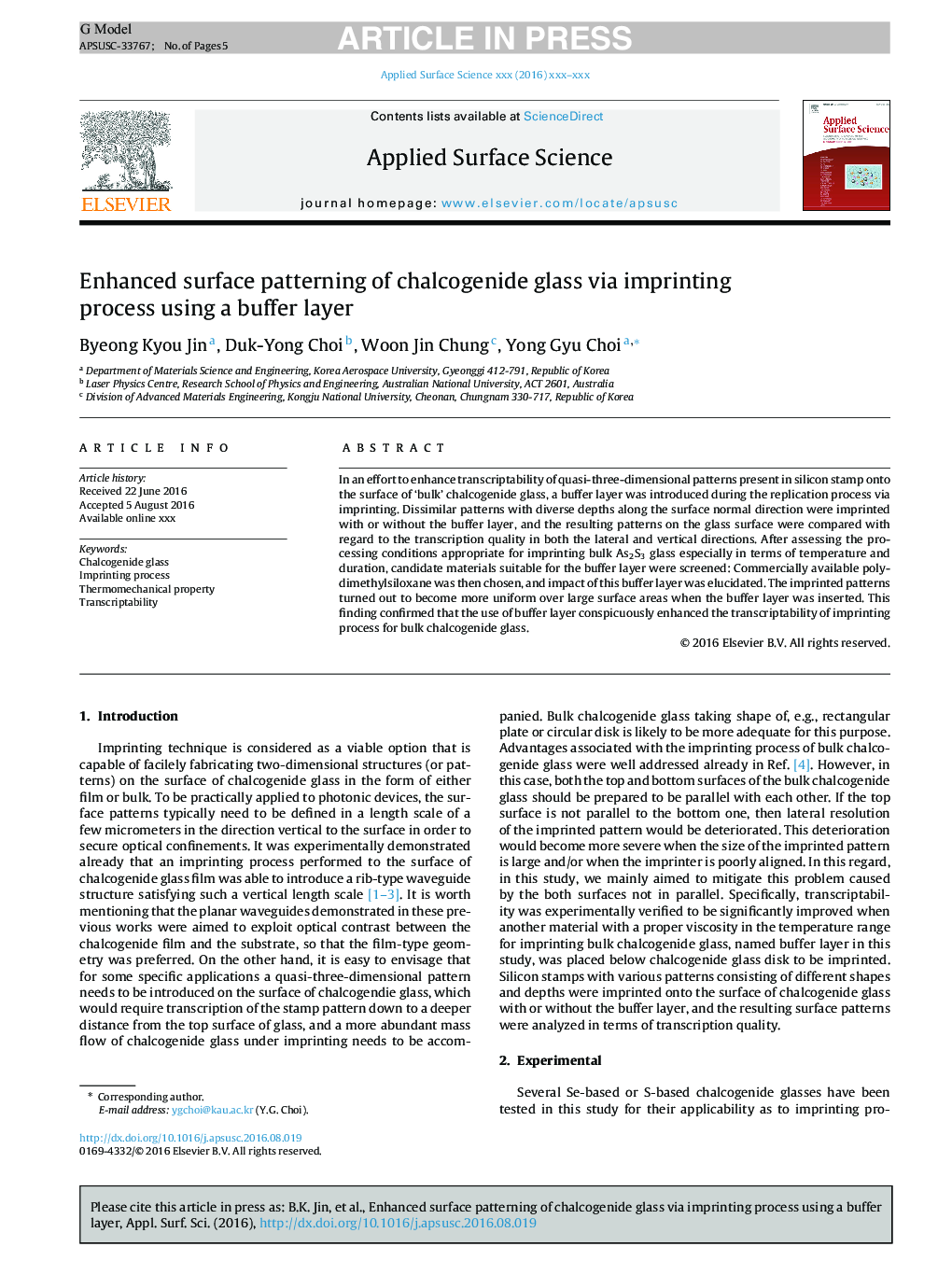| Article ID | Journal | Published Year | Pages | File Type |
|---|---|---|---|---|
| 5350538 | Applied Surface Science | 2017 | 5 Pages |
Abstract
In an effort to enhance transcriptability of quasi-three-dimensional patterns present in silicon stamp onto the surface of 'bulk' chalcogenide glass, a buffer layer was introduced during the replication process via imprinting. Dissimilar patterns with diverse depths along the surface normal direction were imprinted with or without the buffer layer, and the resulting patterns on the glass surface were compared with regard to the transcription quality in both the lateral and vertical directions. After assessing the processing conditions appropriate for imprinting bulk As2S3 glass especially in terms of temperature and duration, candidate materials suitable for the buffer layer were screened: Commercially available polydimethylsiloxane was then chosen, and impact of this buffer layer was elucidated. The imprinted patterns turned out to become more uniform over large surface areas when the buffer layer was inserted. This finding confirmed that the use of buffer layer conspicuously enhanced the transcriptability of imprinting process for bulk chalcogenide glass.
Related Topics
Physical Sciences and Engineering
Chemistry
Physical and Theoretical Chemistry
Authors
Byeong Kyou Jin, Duk-Yong Choi, Woon Jin Chung, Yong Gyu Choi,
